The Economics and Statistics Division maintains archives of previous publications for accountability purposes, but makes no updates to keep these documents current with the latest data revisions from Statistics Canada. As a result, information in older documents may not be accurate. Please exercise caution when referring to older documents. For the latest information and historical data, please contact the individual listed to the right.
<--- Return to Archive
For additional information relating to this article, please contact:
March 02, 2021CANADIAN ECONOMIC ACCOUNTS Q4 & ANNUAL 2020 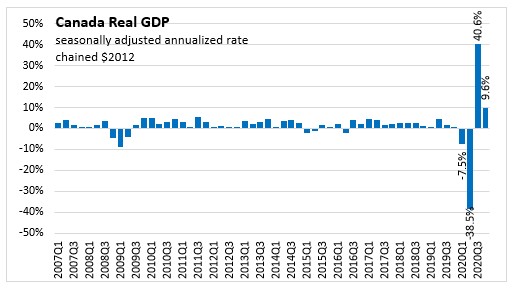
Canada’s Real Gross Domestic Product (GDP) increased 9.6% (all figures seasonally adjusted at annual rates) in the fourth quarter of 2020. This followed a 40.6% growth in Q3 and a 38.5% decline in Q2 2020. As the economy adjusted to containment measures related to COVID-19 and the continuing social distancing measures, Canada’s real GDP showed huge fluctuations throughout the year.
Statistics Canada notes that the growth in the final quarter was supported by increases in business inventories, government final consumptions expenditures, investment in machinery and equipment and housing investment. Final domestic demand was up 3.5% in Q4 2020.
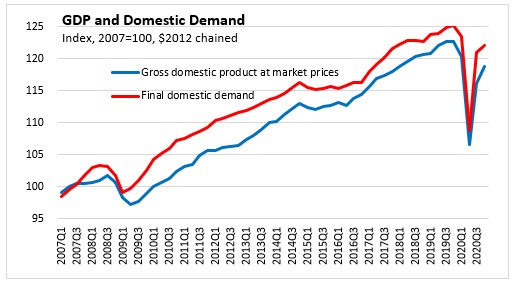
Household spending declined 0.4% in the final quarter. Durable goods consumptions decline 0.7% due to lower purchases of new trucks, vans, new passenger cars and sport utility vehicles. Used motor vehicle sales increased as consumers opted for used goods.
Service consumption increased 0.8% in Q4 2020 supported by increases in outpatient services, and insurance and financial services.
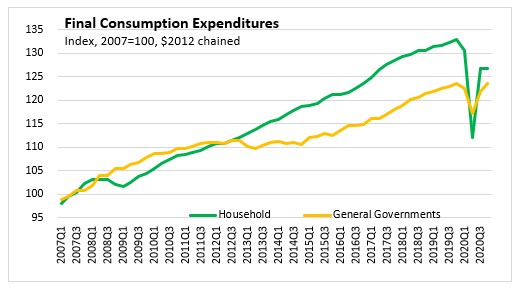
Housing investment increased 18.4% in the final quarter following a 191.4% gain in the third quarter of 2020. New construction increased andrenovations were up. The gains in new construction was supported by increased in both single-family and multiple-unit dwellings. Ownership costs increased with increased home resale activity across Canada.
Business investment in machinery and equipment increased 31.1% due to higher imports of industrial machinery and equipment. Investment in engineering structures was up while investment in non-residential buildings declined.
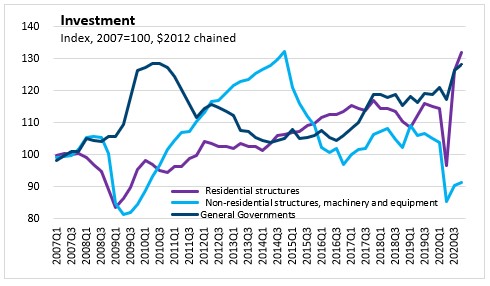
Reflecting lower global demand, export volumes slowed to 5.0% in Q4 2020 following a 73.1% gain in the previous quarter. Import volumes were up 10.8% in the final quarter supported by increases in imports of consumer goods, motor vehicles and parts and industrial machinery and equipment.
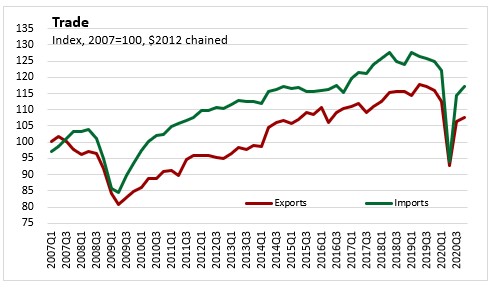
Inventories accumulation increased to $1.7 billion in the final quarter.
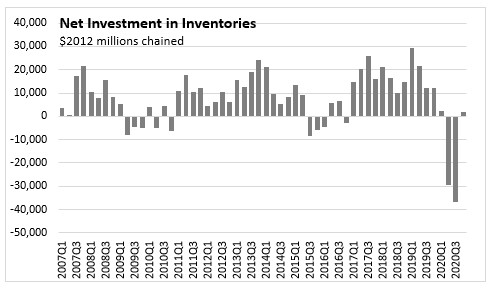
The terms-of-trade (ratio of price of exports to price of imports) increased 1.7% with export prices rising for crude oil and crude bitumen (+2.4%). The overall GDP deflator was up 4.4% on annualized basis.
Nominal GDP increased 14.3% in Q4. Annualized compensation of employees rose 10.4%. The household savings rate declined from 13.7% in Q3 to 12.7% in Q4 2020.
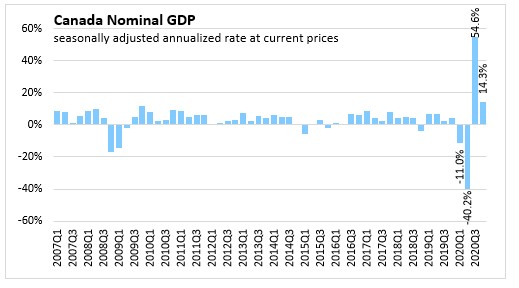
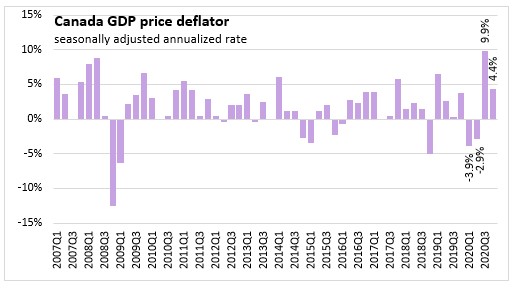
ANNUAL – 2020
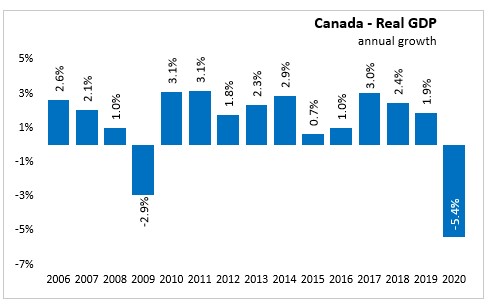
Real GDP in Canada declined 5.4% in 2020 following a 1.9% growth in 2019. This was the first annual decline since 2009. The COVID-19 pandemic and the strict containment measures put in place slowed down economic activity throughout 2020.
Household consumption declined 6.1% in 2020, following a 1.6% growth in 2019. Services consumption took a larger hit with businesses relying on personal interactions closing amid the pandemic.
Business capital investment declined 5.3% in 2020. Residential structures increased 3.9% in 2020 following two years of consecutive declines. Machinery and equipment investment was down 16.4% while intellectual property products declined 3.8%.
Export volume declined 9.8% with both goods and services imports registering declines in 2020. Import volumes declined 11.3%. The decline in trade was mostly due to lower global demand and supply chain disruptions due to COVID-19.
Nominal GDP declined 4.6% in 2020. Compensation of employees declined 1.6% with savings rate increasing to 15.1% in 2020. The increase in savings rate was a result of government stimulus benefits and lower consumption due to the uncertain economic environment.
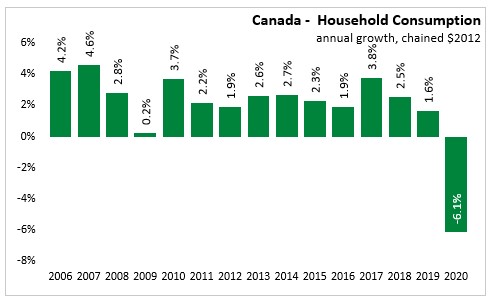
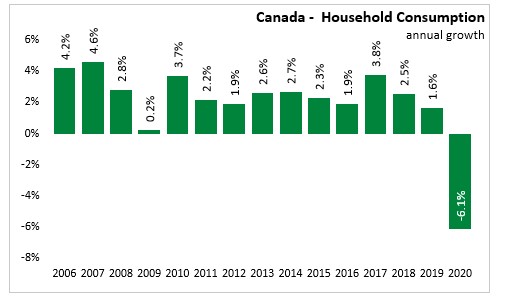
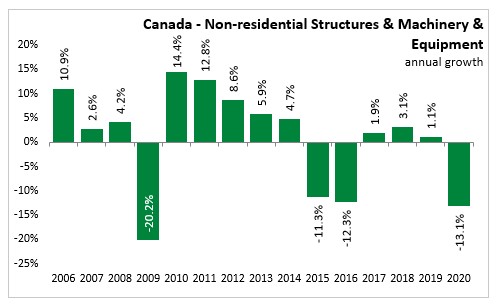
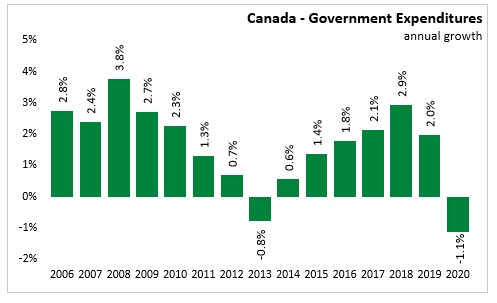
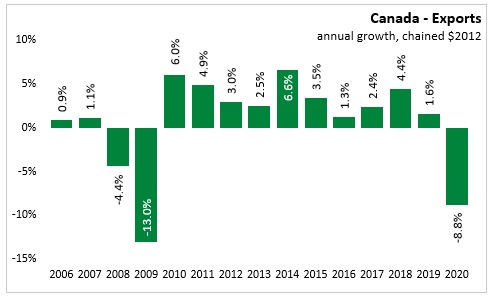
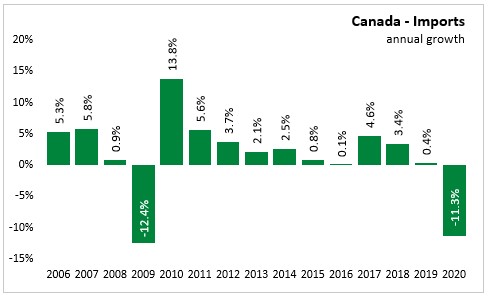
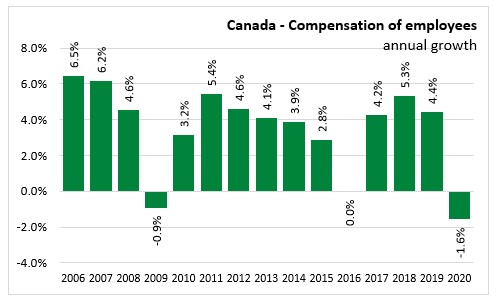


A seasonally adjusted annualized rate shows what the percent change would be if the quarterly rate continued for four quarters. It is computed by compounding the quarterly rate for four quarters. Reporting annualized rates facilitates comparability between annual and quarterly growth, but can exaggerate change when series are volatile. The COVID-19 shocks do not indicate an increase of Canadian GDP by 9.6% in Q4. It would take four quarters of compounded contraction at the same pace as reported in Q4 to increase Canadian GDP by 9.6%.
Source: Statistics Canada Gross domestic product, income and expenditure, second quarter 2020
Statistics Canada. Table 36-10-0103-01 Gross domestic product, income-based, quarterly (x 1,000,000)
Statistics Canada. Table 36-10-0104-01 Gross domestic product, expenditure-based, Canada, quarterly (x 1,000,000)
Statistics Canada. Table 36-10-0111-01 Current and capital accounts - National, Canada, quarterly
<--- Return to Archive